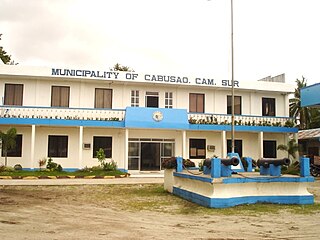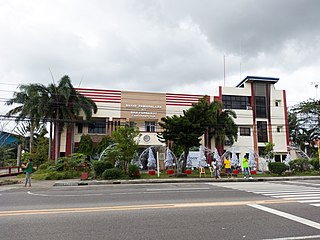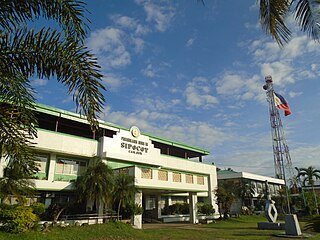This article needs additional citations for verification .(January 2013) |
Libmanan | |
|---|---|
| Municipality of Libmanan | |
 J. Hernandez Park Libmanan | |
| Nickname: Rice Granary of Camarines Sur | |
 Map of Camarines Sur with Libmanan highlighted | |
Location within the Philippines | |
| Coordinates: 13°41′47″N123°03′36″E / 13.6964°N 123.06°E | |
| Country | Philippines |
| Region | Bicol Region |
| Province | Camarines Sur |
| District | 2nd district |
| Founded | April 3, 1574 |
| Barangays | 75 (see Barangays) |
| Government | |
| • Type | Sangguniang Bayan |
| • Mayor | Jesus F. Camara |
| • Vice Mayor | Jerry R. Tendero |
| • Representative | Luis Raymund F. Villafuerte Jr. |
| • Municipal Council | Members |
| • Electorate | 71,613 voters (2022) |
| Area | |
| • Total | 342.82 km2 (132.36 sq mi) |
| Elevation | 7.0 m (23.0 ft) |
| Highest elevation | 55 m (2,480 ft) |
| Lowest elevation | −2 m (−7 ft) |
| Population (2020 census) [3] | |
| • Total | 112,994 |
| • Density | 330/km2 (850/sq mi) |
| • Households | 25,798 |
| Economy | |
| • Income class | 1st municipal income class |
| • Poverty incidence | 29.53 |
| • Revenue | ₱ 349 million (2020) |
| • Assets | ₱ 1,033 million (2020) |
| • Expenditure | ₱ 340.7 million (2020) |
| Service provider | |
| • Electricity | Camarines Sur 1 Electric Cooperative (CASURECO 1) |
| Time zone | UTC+8 (PST) |
| ZIP code | 4407 |
| PSGC | |
| IDD : area code | +63 (0)54 |
| Native languages | Central Bikol Tagalog |
Libmanan, officially the Municipality of Libmanan (Central Bikol : Banwaan kan Libmanan; Tagalog : Bayan ng Libmanan), is a 1st class municipality in the province of Camarines Sur, Philippines. According to the 2020 census, it has a population of 112,994 people. [3] Libmanan is the largest municipality in Camarines Sur in terms of population, and the second largest in terms of land area.
Contents
- History
- Important dates and events
- Geography
- Climate
- Barangays
- Demographics
- Religion
- Economy
- Infrastructure
- Heritage
- Government
- List of former chief executives
- Education
- References
- External links
The municipality's history dates back to before the beginning of Spanish colonization, and its city center is home to a number of beautiful historic Art Deco buildings including the palatial Morales Ruins which soar over the road entering Libmanan proper.




























